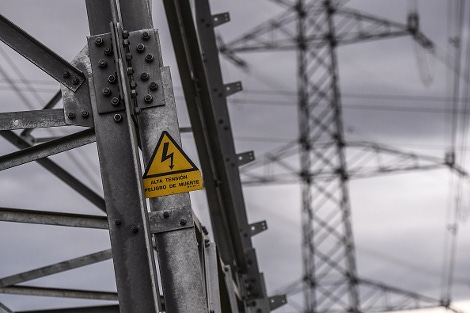Why Combined Heat and Power Makes Sense for Data CentersWhy Combined Heat and Power Makes Sense for Data Centers
Technology promises substantial cost reductions through efficiency and ability to generate chilled water

Data center operators are late adopters of combined heat and power, a technology that’s been around since the late 1800s and used extensively in hospitals, refineries, petrochemical and biotech facilities. But using such plants as the source of data center power can have substantial energy efficiency and cost reductions benefits.
That’s according to Terence Waldron, president at Waldron Engineering and Construction, who spoke about the use of combined heat and power plants (CHPs) in data centers Tuesday at the Data Center World conference in Las Vegas.
CHPs convert natural gas to energy efficiently, but when used in tandem with absorption chillers can also in some cases provide all the chilled water a data center may need, he said. A CHP can also act as backup in case of utility-feed failure, so there are reliability benefits as well.
Finally, a facility that has a CHP has substantially lower overall greenhouse-gas footprint than a facility that gets all of its power from the utility and uses a boiler for comfort heating.
There is another technology on the market that converts natural gas into electricity that has been getting more and more attention as a source of data center power: fuel cells. In Waldron’s opinion, while CHPs are less efficient generators than fuel cells, they require much smaller footprint to generate the same amount of power and win on efficiency when their ability to create chilled water is factored in. CHPs are also a lot cheaper, he said.
In Delaware, a group of residents recently successfully lobbied officials to block a major project to build a data center powered by a combined heat and power plant. Officials blamed lack of detailed information in the developer’s plans for the project’s failure to reach approval.
Converting Energy Loss to Chilled Water
Generally, CHP engines are 40-percent efficient in the way they convert fuel into energy, according to Waldron. An average utility is 33 percent efficient. Energy is lost in the generation process, transmission, and transformers on the user’s property.
With a 40-percent efficient engine, the remaining 60 percent of energy takes the form of heat, which an absorption chiller converts into chilled water. Coincidentally, the amount of chilled water a 40-percent efficient engine can produce this way is about equivalent to the amount of chilled water needed to cool the servers it powers, Waldron said.
“It’s an interesting balance,” he said. “No-one designed the engine in that way. It just happened that way.”
Of course, your mileage may vary based on the design of the data center and on the kinds of IT equipment it supports.
Not a Replacement for Electrical and Mechanical Gear
Deployed as a layer on top of the existing power and cooling infrastructure, the CHP becomes the primary source of both electricity and chilled water. To be clear, Waldron does not advocate for relying on the CHP alone for both of those resources.
“You always apply it as a layer sitting on top of your existing infrastructure,” he said. That way it works in tandem with utility power and the facility’s dedicated chillers.
The utility feed picks up whatever the CHP doesn’t serve, and the chillers pick up whatever chilled water is still required.
Some Costs Will Go Up
Deployment of a CHP impacts the bottom line negatively in two ways. One is the added line item of maintenance, since the data center operator usually has to sign a long-term service agreement with a vendor.
The other potential drawback is higher utility rates. Having a CHP makes you a “poor load-factor client” in the utility’s eyes, since your utility load is now greatly reduced and fluctuates a lot more. “You used to be a phenomenal load-factor client,” Waldron said.
Still, even with these two added costs, payback on a CHP can be four to five years for a data center operator. These projects don’t provide the highly desirable two-year payback periods, but the value of utility projects lasts for years and years.
In many states, governments have also forced utilities to provide incentives to customers that install CHPs, since regulators like the efficiency and low CO2 emissions they provide.
Arizona Data Center Saves Lots of Cash Annually
Waldron presented a case study of a CHP deployment by a data center customer in Arizona he could not name due to confidentiality agreements. The plant has been saving the customer about $776,000 per year in operational costs.
The customer’s business-as-usual annual cost was close to $2 million. Considering the annual savings and that the capital cost of deploying the CHP was $3.7 million, the payback in that particular case is about 4.8 years, according to Waldron. That’s “simple payback,” which doesn’t include things like utility incentives, capacity payments, and tax treatment.
About the Author
You May Also Like







